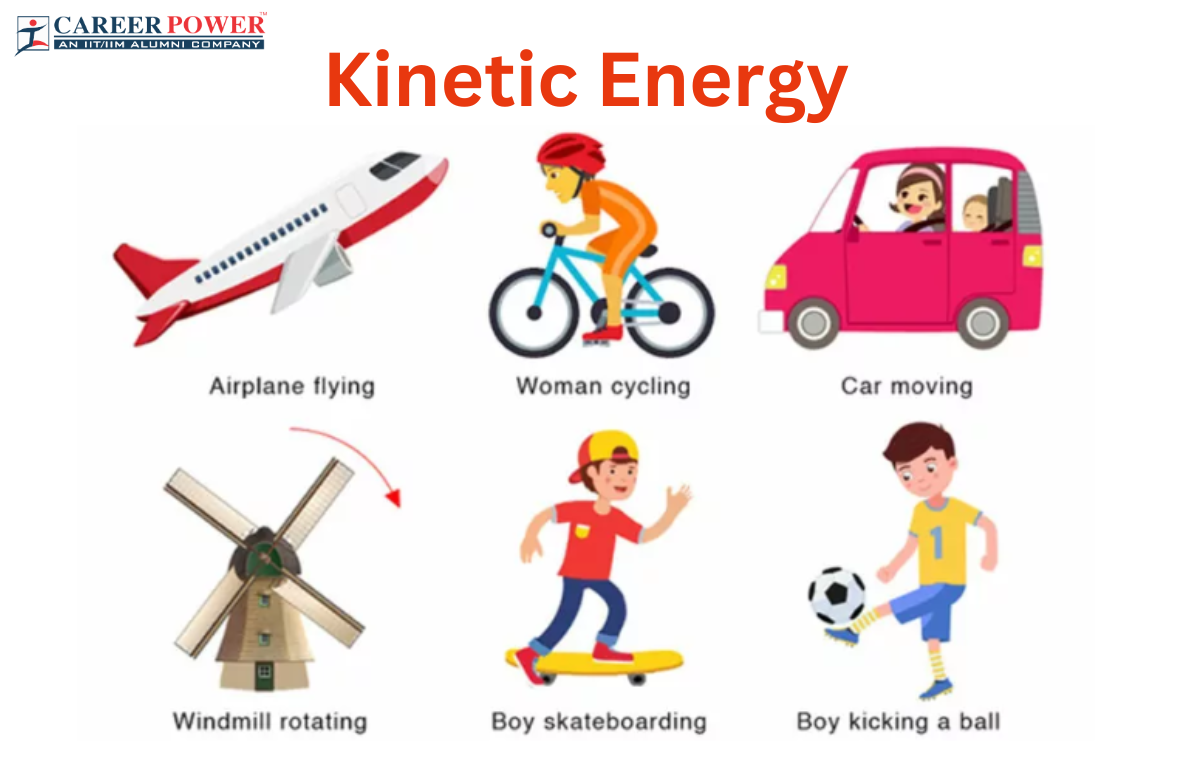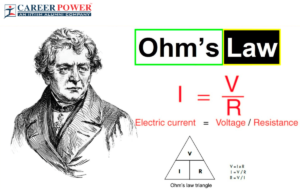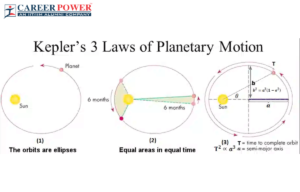Kinetic Energy is the form of energy that is possessed by an object or particle due to its motion. The Kinetic Energy of an object not only depends on the velocity of an object but also on the mass of an object. Kinetic Energy only provides magnitude nor direction, it can never be negative. The SI Unit of Kinetic Energy is Joules(J).
Kinetic Energy Definition
Kinetic Energy is the energy that is possessed when an object is in motion. Kinetic Energy is directly proportional to the mass of an object i.e., the higher the mass of an object, the higher will be the kinetic energy. The Kinetic Energy is also directly proportional to the square of the Velocity of an object i.e., if we double the velocity of an object, its kinetic energy will increase four times.
Kinetic Energy Formula
The formula for Kinetic Energy (K.E) is:
K.E = ½ mv²
- Where, ‘m’ is the mass of an object measured in kilograms (kg).
- ‘v’ is the velocity of an object measured in metres per second (m/s).
- And Kinetic Energy is measured in Joules (J)
- An object with higher mass or higher Velocity will have a greater Kinetic Energy.
Examples of Kinetic Energy
All the objects that are in motion are using kinetic energy while the objects that are at rest have zero kinetic energy. For example: Running- when a person is running due to the motion of his or her legs their body has Kinetic Energy
Wind: the motion of air molecules at the time of wind
Moving car: the moving car also has kinetic energy due to its mass and velocity
Flowing water in the river: the flowing river water has kinetic energy as it flows downstream
Bullet fired from a gun: as the bullet fired from the gun has a very high velocity, it also possesses kinetic energy
Derivation of Kinetic Energy
The kinetic energy of a moving body is measured by the amount of work it can do before coming to rest.
Let an object of mass ‘m’ move with a velocity ‘v’. The kinetic energy of this object is given by the work-energy theorem. The work done by an object is equal to the change in its kinetic energy.
K.E is the work done by object
When a force ‘f’ is applied to an object, in going through a distance ‘s’ in the direction of force, then the work done ‘W’ is given by
W = f * s
(i) At point B there is no motion of the body, hence there is no Kinetic Energy. That means all the kinetic energy has been used in doing the work ‘W’. so from this we can say kinetic energy is equal to the work done
K.E = W
K.E = f *s
(ii) if a body has an initial velocity ‘u’ u=o and final velocity ‘V’, acceleration ‘a’ and travels a distance ‘s’ and according to the third law of motion
V² = u²*2as
OR V² = v²*2as
(please note that we have written V²=v²*2as instead of the usual v²= u²+ 2as)
In the above example, we have:
Initial velocity of the body = v
Final velocity of the body = V
Acceleration = -a
Distance traveled = s
Now, putting all the values in the above equation, we get
(0)² = v² -2as
OR v² = 2as
From Newton’s second law of motion, we have:
F = m * a
OR A = F/m
Now let’s put this value of acceleration ‘a’ in the equation
v² = 2as
v² = 2 * F *s / m
F *s = ½ mv²



 Ohm's Law: Definition, Formula, Limitati...
Ohm's Law: Definition, Formula, Limitati...
 Newton's First Law of Motion: Definition...
Newton's First Law of Motion: Definition...
 Kepler's Laws of Planetary Motion: First...
Kepler's Laws of Planetary Motion: First...













